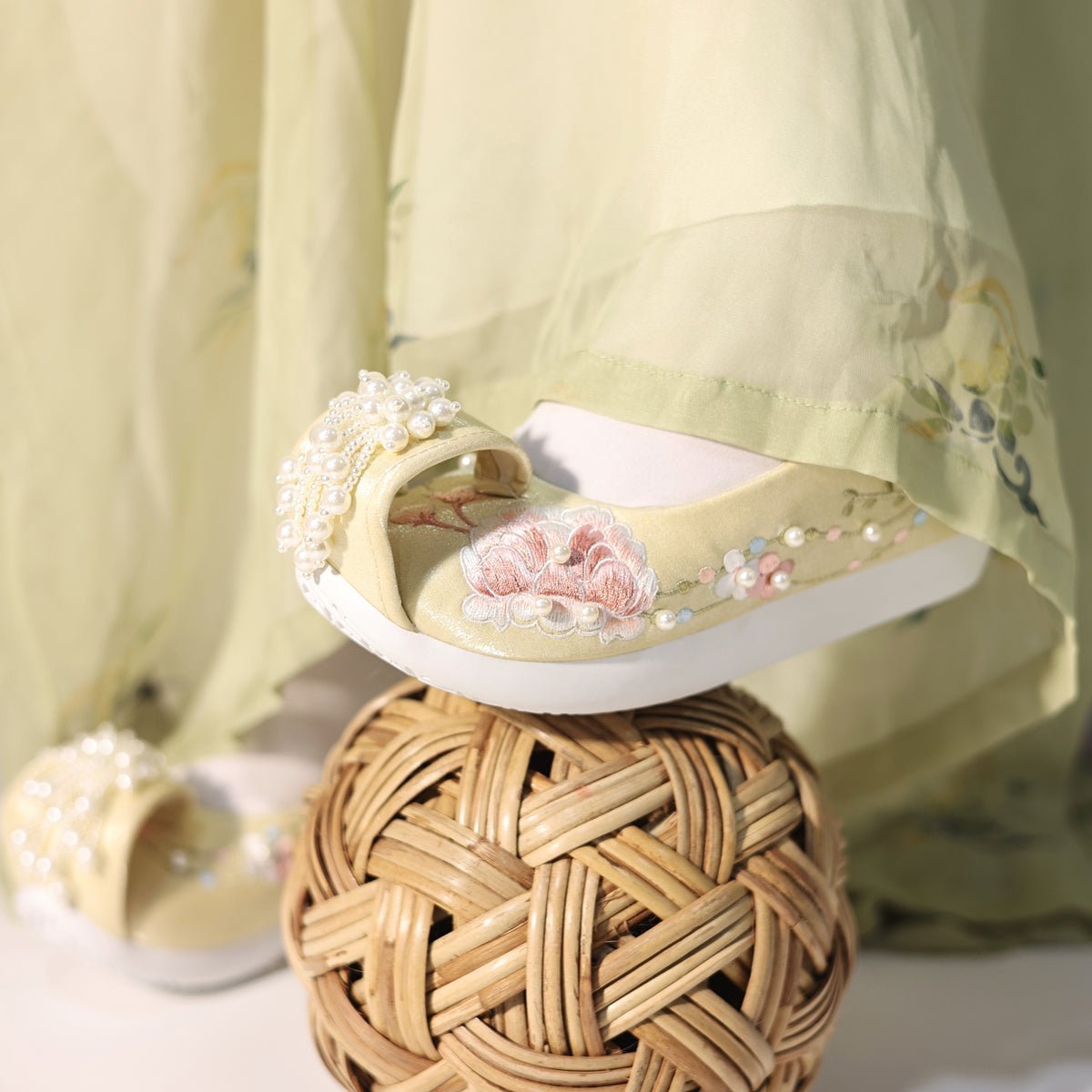The Chinese hairpin boasts a profound history. Archaeological evidence confirms its origins trace back to the "bone ji" (proto-hairpin) unearthed at the Peiligang site in Xinzheng, Henan, dating back 8,000 years. As documented in Chinese Archaeology: Neolithic Volume, this represents East Asia’s earliest known hair-fastening tool. The renowned Shang Dynasty Tomb of Fu Hao further yielded 499 "jade ji" (also hairpin precursors), recorded in the Cultural Relics Press publication Yinxu Fu Hao Tomb. These jade pins featured bird-and-beast motifs, signaling the emergence of class-based ritual systems.
By the Han Dynasty, the Book of Later Han: Treatise on Carriages and Clothing explicitly mandated:
"The Grand Empress Dowager’s hairpin shall be made of tortoiseshell, measuring one chi... The Empress wears gold buyao [step-shakers]; Noble Consorts use tortoiseshell hairpins."
This reflects China’s strict sumptuary laws, particularly regarding noblewomen’s accessories, where materials like jade and gold symbolized status—forbidden to commoners.
While these historical artifacts establish the hairpin’s evolution, its romantic symbolism remains equally captivating. During the Tang-Song era, hairpins served as tokens of love exchanged between lovers to pledge unwavering devotion. Poetic masterpieces immortalize this tradition:
Tang poet Bai Juyi’s Song of Everlasting Sorrow:
"She broke the gold hairpin, keeping one half, / Sundered the inlaid case, one part stayed with him... / ‘So long as our hearts beat as one as this gold, / In heaven or on earth, we’ll meet again!’"
(The verse depicts Consort Yang splitting her hairpin as a deathbed pledge to Emperor Xuanzong.)
Song lyricist Xin Qiji’s Zhuying Tai Near: Late Spring:
"At Peach Leaf Ferry we parted, hairpin broken in two, / Willows veiled the southern bank in misty hue..."
(Evoking lovers snapping a hairpin during farewells at Peach Leaf Crossing.)
Having explored this rich legacy, let’s demystify using these exquisite hairpins. Today, we’ll master three core techniques to effortlessly secure your hair with a Chinese hairpin. Follow these steps to banish flyaways and embrace timeless elegance.

I. Core Secret: Twist + Anchor = Unbreakable Hold
The essence of hairpin security lies in cleverly utilizing the strong friction generated by twisting the hair, combined with a stable anchor point at the scalp, forming a self-locking mechanism. This is far more complex than simply "inserting" the hairpin.
Beginner-Friendly Detailed Steps (Classic Low Bun):
1、Preparation & Extreme Twisting:
Lower your head and gather all hair at the nape of your neck (like a low ponytail), gripping tightly with one hand.

Key Action: With your other hand, twist the ponytail firmly in one direction (clockwise or counter-clockone) continuously and forcefully! Keep twisting until the hair naturally coils up, forming a tight, flat small bun pressed near the hairline at the base of your skull. The smoother your hair, the more force you need.

2、Precise Positioning & Angle Control:
Maintaining the twist tension and bun shape, pick up the hairpin with your other hand.
Lightly place the tip of the hairpin against the upper edge of the twisted bun (the side closer to the crown of your head).

Adjust the hairpin so it forms roughly a 45-degree angle with the floor (pin end slightly tilted up, tip pointing towards the ground). This angle is crucial for smooth insertion and locking.

3、Insertion Lock & Finding the Anchor:
Following the direction of your twist path (this is vital!), steadily push the hairpin horizontally into the hair. You should distinctly feel the pin body:
Piercing through the center of the twisted bundle (feel resistance).

The tip emerging from the lower edge on the opposite side of the bun.
Most Crucial: The tail end (head) of the pin firmly presses against the underlying layer of hair tightly against the scalp. This scalp hair bundle is the powerful anchor point that, combined with the twisting friction, locks the bun securely.
II. Key Success Details & Advanced Techniques:
Twist is the Foundation: Loose = Failure! The twist must be tight enough to make the hair grip itself powerfully. Fine or slippery hair? Spray dry shampoo or use texturizing products before twisting to increase friction.
Anchor Point is the Soul: Absolutely ensure the pin tail presses down on that scalp-hugging hair layer – it's the "brake pad" preventing slippage. After insertion, gently press the pin head to confirm contact.
45-Degree Angle is the Shortcut: This angle best matches the force direction of the twisted bun, allowing the pin to pierce the core and find the anchor easily. Avoid inserting horizontally.
Choose the Right Tool for Success:
Length: A pin shaft of 10-15 cm (excluding decorative head) is the golden standard. For shoulder-to-mid-back length hair, 12-13cm is safest. Too short (<8cm) lacks holding power; too long (>16cm) is awkward and snags.
Material & Texture: Pins with surface texture grip far better than smooth ones! Opt for: Natural wood/bamboo (inherent grain), matte-satin finish metal/alloy, resin/horn pins with fine carvings. Avoid: Mirror-polished metal/plastic (extremely slippery) or overly heavy materials (pulls on scalp).
Design: Beginners should choose simple, slightly curved "stick" pins or ultra-slim pins. No large/complex ornaments – they interfere with mastering insertion angle and depth. Ornate dangling pins ("buyao") or wide pins are best tried after mastering basics.
Anti-Slip Reinforcement Tips:
"Double Pin" Reinforcement: For thick hair or large buns, after the first pin is secure, insert a second shorter pin beside it using the same technique (mind angle & anchor point) to form a cross-lock for rock-solid hold.
"Hair Wrap" Method: Before twisting, set aside a small strand of hair. After inserting the pin, wrap this strand around the visible part of the pin shaft and tuck it in. This hides the pin end and adds extra security.
III. Core Summary:
Tight twist forms the base bun. Pin tip starts at the bun's upper edge. Insert at 45 degrees along the twist path. Piercing the bun's core and pressing the pin tail firmly against the scalp hair layer is the key to locking success! Paired with a medium-length, textured, simple hairpin, you can effortlessly create a secure and elegant hairstyle.
Stop letting your beloved hairpins gather dust! Master the core physics of twist and anchor, unlock the millennia-old wisdom of the hairpin in a few steps, and let the timeless grace of elegantly pinned hair add a touch of serene, classical beauty to your everyday look. Start practicing now and feel the transformation!
Purchase link
15% off on Hanfu purchases, plus a complimentary exquisite Chinese-style hairpin



